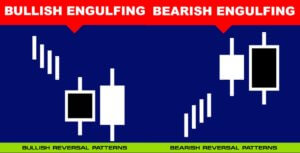Victor Sperandeo, known as Trader Vic on Wall Street, is a legendary futures trader who has over 45 years of experience in the commodities markets. In this article, we will show two trading setups when the trend is changing and how to take advantage of the markets.
2B PATTERN
In a bull market, the 2B pattern requires that the price performs a new maximum, then a significant retracement and then that price tests again the previous maximum or attaining a higher one, that is better known as false breakdown (or false breakout). When this test fails, it is a sign that the price may be developing a failure in the uptrend, thus creating a potential reversal of the trend. Some traders call this pattern “Trap” (bear trap and bull trap). An idealisation of this pattern is in figure 1.
Figure 2 is an example of a 4-hour EUR-USD chart. The Euro shows an initial bearish movement to 1.1573; when it reaches this level, the price reacts making a retracement to 1.1689. After this retracement, the Euro makes a new low as a false breakdown. When it happens, the price makes a bullish move starting a new bullish trend.
![]()
The setup of this pattern is:
- Entry: Buy above (or sell below) the false breakout (or breakdown) candle.
- Stop Loss: Below (or above) the last swing (see figure 1).
- Profit Target: Previous swing high (or low).
1-2-3 PATTERN
This pattern is based on the concept that the trend changes when the price breaks the trendline described by the Dow Theory. In an uptrend, the price is making higher highs and higher lows, but then, the market breaks down the trendline. Afterwards, the price makes a test of the tops, but it does not reach a new maximum. Some traders call this pattern as “Failure”. Figure 3 shows an idealisation
As in the case of 2B Pattern, the 1-2-3 Pattern looks to identify a trend reversal or the end of the current trend. Let’s consider in figure 4, the BNKG 30-minute chart, which is following an upward trend. Once it reaches a new maximum, BKNG breaks down the uptrend line (1), then it performs a test that cannot overcome the previous maximum (2) followed by a price failure to reach a new maximum and a break down of the last support (3).
![]()
The setup of this pattern is:
- Entry: Buy above (or sell below) the swing of the breakout (or breakdown) of the trendline.
- Stop Loss: Below (or above) the last swing (see figure 3).
- Profit Target: Previous swing high (or low).
THE BACKTEST
In a personal study that considered the frequency of recurrence of the patterns: Trap, Failure, Climax (or turn in V) and Double (Double Top, Double Bottom), the results were the following:


As can be seen in Figure 6, the possibility of detecting the Trap patterns (or 2B pattern) is 42.7%, and Failure (or 1-2-3 Pattern) is 41.3%, adding up to 84% of the changes in the trend that occurred in the market. The ability to detect these two patterns can provide an advantage over the market. Figure 6 is a USOIL hourly chart, 2B. 1-2-3 movements are commonly found when we make the backtest to these patterns, even in minutes, as on the GOLD 15-minutes chart (figure 7).

![]()
SUGGESTED READINGS:
- Sperandeo, V. (1994). Trader Vic II – Principles of Professional Speculation. New York: John Wiley & Sons, Inc.










